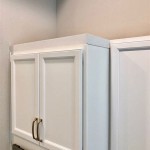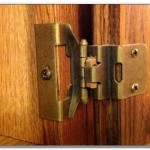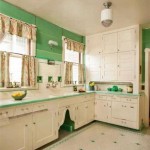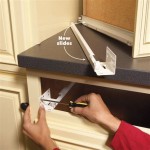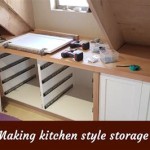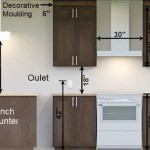Can You Install Kitchen Cabinets On Top Of Tile?
Installing kitchen cabinets directly on top of existing tile is a question that frequently arises during kitchen renovations. While possible, it isn't always the recommended approach. Several factors should be considered before deciding whether to install cabinets over tile, including the condition of the tile, the type of cabinets being installed, and the desired outcome of the renovation.
One primary concern when installing cabinets over tile is the stability of the surface. Tile can become loose or cracked over time, especially in high-traffic areas like kitchens. Installing heavy cabinets on an unstable tile surface can exacerbate these issues, potentially leading to cabinet instability or damage. Therefore, a thorough assessment of the tile's condition is crucial. Any loose or damaged tiles should be repaired or replaced before cabinet installation.
The type of tile also plays a role in determining suitability for cabinet installation. Smaller tiles, like mosaics, often have more grout lines, creating an uneven surface. This unevenness can make it challenging to achieve a level and secure cabinet installation. Larger format tiles present a smoother surface, generally more suitable for direct cabinet installation. However, even with larger tiles, imperfections in the subfloor can still telegraph through, affecting cabinet stability.
Another factor to consider is the type of cabinets being installed. Stock cabinets, known for their standardized sizes and affordability, often have limited adjustability. This lack of adjustability can make it difficult to compensate for any unevenness in the tiled surface. Custom or semi-custom cabinets, on the other hand, offer more flexibility in terms of sizing and adjustments, making them a better choice for installations over tile if the tile surface isn't perfectly level.
The adhesive used for securing the cabinets is another critical element. Traditional construction adhesive may not bond well to tile surfaces. Modified thin-set mortar, specifically designed for tile applications, can provide a stronger bond between the cabinets and the tile. However, even with the correct adhesive, the long-term stability depends heavily on the tile's integrity.
Water damage is a significant concern in kitchens. Installing cabinets directly on tile can create a seam where water can seep in, potentially damaging both the cabinets and the subfloor. Properly sealing these seams with silicone caulk is crucial to prevent water infiltration. However, even with meticulous sealing, the risk of water damage remains higher compared to installations where the tile is removed.
Removing the existing tile before cabinet installation offers several advantages. It allows for a thorough inspection and repair of the subfloor, ensuring a solid foundation for the cabinets. It also provides a clean, level surface for easier and more secure cabinet installation. While removing tile adds time and cost to the renovation, it often results in a more durable and long-lasting outcome.
An alternative to removing the tile completely involves installing a layer of cement backer board over the existing tile. This creates a stable and level surface for cabinet installation while avoiding the labor-intensive process of tile removal. The backer board is secured to the tile using thin-set mortar, providing a strong and reliable base for the cabinets. However, this method adds to the overall thickness of the floor, which may require adjustments to appliances, doors, and other fixtures.
Measuring accurately becomes doubly important when installing cabinets over tile. The added thickness of the tile must be factored into all measurements to ensure proper fit and alignment of the cabinets. Failure to account for the tile thickness can lead to significant installation challenges and potentially require costly rework.
Seeking professional advice is highly recommended when considering installing kitchen cabinets over tile. A qualified contractor can assess the specific conditions of the kitchen, including the tile's integrity and the subfloor stability, and recommend the best course of action. They can also provide guidance on appropriate adhesives, sealing techniques, and other crucial aspects of the installation process.
Ultimately, the decision to install cabinets over tile depends on a variety of factors. While it can be a viable option in certain situations, it's essential to carefully weigh the potential risks and benefits. Prioritizing a thorough assessment of the existing conditions, selecting appropriate materials, and utilizing proper installation techniques are crucial for achieving a successful and long-lasting kitchen renovation.
.jpg?strip=all)
Should You Install Tile Under Cabinets

Should You Install Tile Floor Before Or After Cabinets Angi

Should You Install Tile Floor Before Or After Cabinets Angi

Tiling Over Tile Backsplash The Lilypad Cottage

Should You Install Tile Under Cabinets

How To Install Floating Kitchen Shelves Over A Tile Backsplash

Should You Install Tile Floor Before Or After Cabinets Angi

What Type Of Flooring Can You Install Over Ceramic Tile
How To Install Stacked Cabinets Over Builder S Grade Queen Bee Of Honey Dos

Tiling Over Tile Backsplash The Lilypad Cottage
Related Posts

